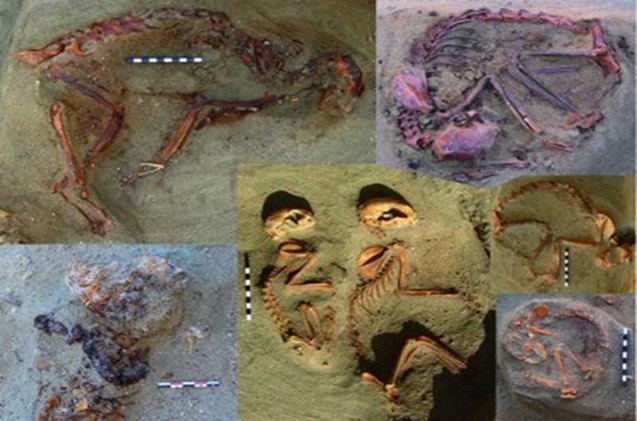Ancient Pet Cemetery Proves Egyptians Respected Their Family Fur Membe

Archaeologists have discovered a pet cemetery they approximate to be about 2,000-years-old, and found the remains of dogs, monkeys and cats who were buried there.
Dr. Marta Osypinska, of the Polish Academy of Sciences and the author of a new study in the journal Antiquity, says that the findings suggest that there pet owners back then had similar emotional relationships with their pets as we currently know today. Many of the animals were still wearing the iron collars they had been wearing when they were buried, and the adornments on some of the graves indicated that the pets were purposefully and specifically buried, rather than just discarded as common waste.
Often in ancient Egyptian ruins, pets were buried, but most were with or near their owners. This newly discovered cemetery only has the remains of two people buried, and most likely that was done nearly three centuries after the pets were buried. Resarchers argue that it is clearly a cemetery for the specific purpose of pet burial.
Related: Ancient Dogs Provide Clues About North America’s Early Inhabitants
Dr. Osypinska and fellow researchers discovered the cemetery while they were excavating a trash dump outside ruins of ancient Egyptian port town, Berenike. Even in bustling ancient days, the port originally served as a rest station for African elephants who were about to head to battlefields. The burials are anticipated to be dated of the first and second centuries, A.D., a time when the Romans used the port as a busy trading area.
Traditionally, ancient Romans were known to love their pets, especially those of the canine variety, and the remains of one similar in build to a mastiff showed the love that they placed in their pets. The animal’s body revealed a full belly, indicating a fine last meal, and skeletal exams showed the dog probably suffered from bone cancer, which is still a prevalent issue of today. The owners had wrapped the body in a basket and adorned the grave with pottery, indicating that it was most likely a very loved and missed animal.
Related: Recently Discovered Fossil Reveals New Species Of Dog
In the past, researchers have found animal cemeteries in other places in Egypt–some catacombs holding approximately eight million mummified dogs. The mummified dogs were once used in religious offerings and often animals were buried at ritual burial grounds after being specifically bred for sacrifice and mummification.
Researcher Wim Van Neer of The National History Institute in Belgium theorizes that the animals found at the Berenike site may have been buried for the same purpose, but Dr. Osypinska refutes that theory because the cats found don’t show signs of necks being twisted, which is different than mummified cats buried for ritualistic reasons show. The animal remains found at Berenike show that there was purposed action in the burial process–graves dug the right depth and the animals’ bodies carefully positioned for burial.
The findings are important because Berenike is an area that was somewhat remote. Food had to be imported from hundreds of miles away and that these animals were so carefully and deliberately buried shows the effort that went into maintaining the animals as companions, even in rough circumstances.
Which doesn’t surprise us at all, though, as there’s no doubt that pets really are family members, in good times and bad.
[Source: USA Today]

More by Lori Ennis






















